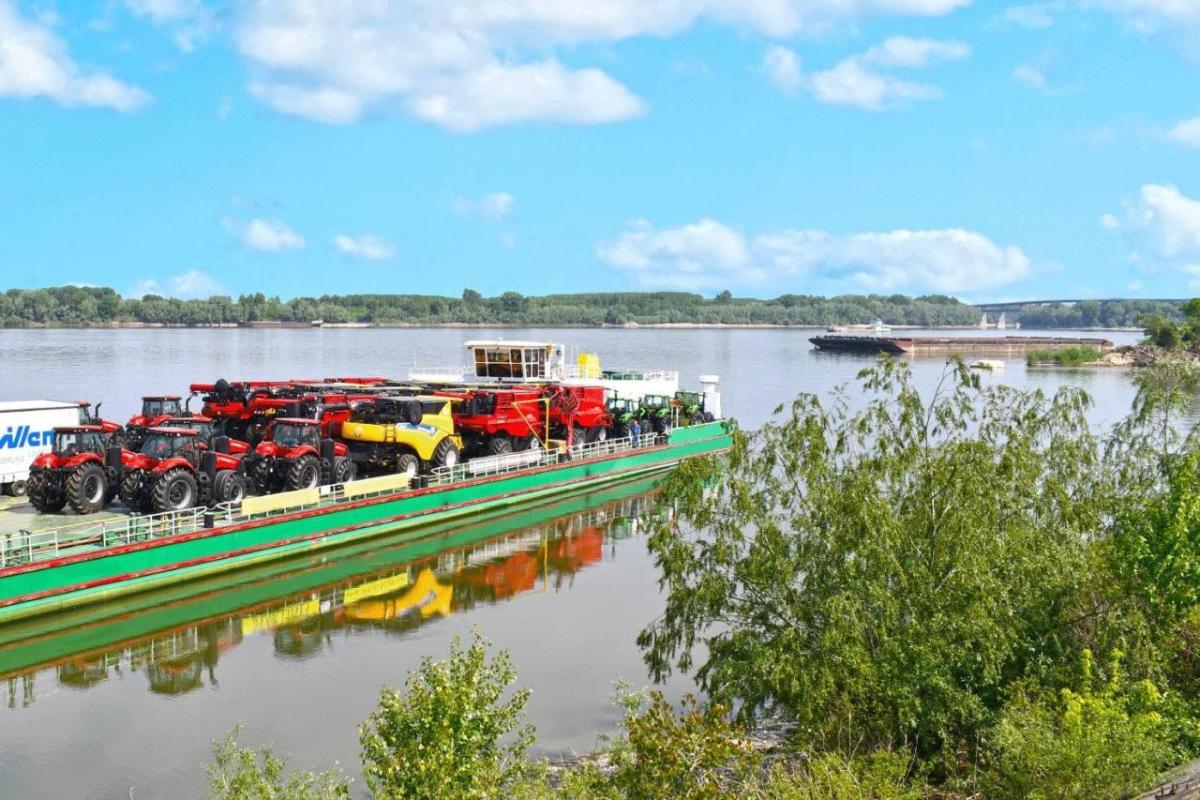(MENAFN- 3BL Media Inc) originally published on triplepundit
For many people, when they think about shipping, what might come to mind is taking a package to the post office or receiving something from Amazon.
For CNH Industrial, a manufacturer of agricultural and construction equipment, shipping might mean moving a 24-ton tractor out of wintry Fargo, North Dakota, or a bulky combine harvester from Nebraska to the easternmost parts of Europe.
The sheer size of these pieces of equipment, long lead times, and often months-long journeys from factory to final customer means that pretty much every shipment is meticulously and uniquely planned. A single shipment might involve transportation across road, rail, ocean and river as the machine progresses toward the end customer.
Due to physical constraints, the choice of options is often limited when moving a heavy object like a combine harvester to its final destination. Logistics planners must negotiate seasonality requirements and assess the routes and modes of transport that are even capable of handling such outsize equipment, while still meeting customer requirements and expectations.
As tough as this job can be, CNH Industrial strives to be mindful about doing things in as environmentally beneficial a way as possible.
Alberto Mela, transport logistics director at CNH Industrial, explained the approach the company takes in moving these massive pieces of equipment, and the challenges and opportunities to mitigate emissions as his team goes about their daily business.
Sustainability in logistics: Making sustainable choices on a journey from Nebraska to the Balkans
“We're always focused on alternative ways of managing transport, because as a company we are focused on reducing emissions,” Mela says.“We always have, as our target, ways to develop initiatives that can reduce emissions. It also has to be operationally beneficial.”
Generally speaking, achieving environmental improvements means keeping shipments of these huge pieces of equipment off the roads. To that end, Mela says,“we don't see the road as the future,” citing pollution, traffic volumes and increasing regulatory constraints in Europe as examples of the problems encountered with this transportation mode.
That doesn't mean the road can always be avoided, but the company can still try to limit it wherever possible.
Take shipments of combine harvesters that the company has to plan. These originate in Grand Island, Nebraska, and on one of their supply routes, they have to make their way to Ruse in Bulgaria.
Total end-to-end shipping from Nebraska to Bulgaria can take anywhere from two to three months to execute. However you break down the journey, logistics managers like those at CNH Industrial are stuck with only one transportation-mode option for certain legs of the journey. Crossing the Atlantic, for example, has to be by ocean, and some of the journey in Western Europe has to be over the road.
However, with optimal planning, other parts of the journey can be arranged to dovetail environmentally advantageous objectives with desired operational benefits. For example, the U.S. leg from Nebraska to the Atlantic Ocean port in Baltimore can sometimes be shifted to rail.
This is by no means the easiest option. Shipping by road is both faster and more flexible than rail. It takes five days to move product to Baltimore by road and 15 days by rail, Lauren Ehleiter, CNH Industrial's North America outbound manager says. The company would also have to ship multiple combines together on this leg of the journey to even make rail viable.
But if CNH Industrial analyzes when customers need the equipment in Europe, it can spot opportunities to consolidate different orders together to make this leg of the journey by train. And there is a benefit in switching even part of this leg to rail.
For example, the company can ship via road to Chicago and by rail the rest of the way, which takes 10 days. Since that five-day difference might be critical in allowing the necessary consolidation of shipments to Baltimore, the road/rail combination can still offer a sweet spot to achieve efficiencies.
Once they leave the port of Baltimore, the combines are shipped by sea to Zeebrugge in Belgium. Ocean is the only mode of transportation available for this leg of course, but still, with limited sailings, the timing of arrival in Baltimore from Nebraska is critical to meet vessel departures. It's all part of the planning!
From Zeebrugge to Duggendorf in Germany, European rail constraints force shipments back onto the road. But in Duggendorf, instead of continuing by road, the combines can be shipped the rest of the way to Bulgaria by river barge.
Going by barge from Duggendorf again allows CNH Industrial to plan for the environmentally favorable option while enjoying an operational benefit. In this case, the operational benefit is being able to dock in Ruse, Bulgaria, on the south side of the Danube River. Happily, that means avoiding an otherwise problematic bridge crossing that would be necessary if coming from the north side of the river by road.
When putting these supply chains together,“the key is planning,” Mela explains, adding that while you cannot always optimize for the most sustainable solution, his team at CNH Industrial always looks for ways to do it when they can.
Making sustainable shifts on shipping within Europe
Another example of CNH Industrial trying to leave the road behind is the intra-European transportation of tractors manufactured in Turkey.
Historically, these would all ship by ocean vessel to the port of Livorno on the west coast of Tuscany, and move by road to the company's distribution facility in the northern Italian city of Parma. The tractors were then distributed from Parma by road to their end customers throughout Europe.
But now,“we are looking to change this paradigm,” Mela says. Again, this involves moving freight more often by sea. Already, the company is reaching markets in Spain and Portugal by shipping to seaports in Barcelona and Valencia.
Building further on the concept, as of May this year, CNH Industrial has also swapped road freight for sea freight to reach customers in France. By shipping to the port of Sète in southern France, the company can bypass the Parma distribution center altogether and avoid road transportation all the way from Italy to the French border.
Next, CNH Industrial hopes to ship directly by ocean to the U.K. market, too.
It's not easy, but it can work
While out of sight for many people, logistics is a huge, multi-trillion-dollar industry, with a consequently huge carbon footprint. While it's not an easy fix to make logistics more environmentally sustainable, CNH Industrial, by way of making changes to supply chains as described here, illustrates there are always opportunities to do better.
“It's complex,” says Mela, talking about new systems being put in place for transporting tractors manufactured in Turkey.“When renegotiating these flows, we have to weigh environmental considerations against a combination of drivers such as quality, time and cost.”
The main shipping carriers are also doing their part, said Selma Maia, transport logistics vice president at CNH Industrial.“We are starting to see that our shipping partners are making large investments in committing to zero net carbon emissions,” she said.” The main ocean shipping lines are looking at their flows, purchasing new vessels that run on greener fuels and seriously committing to rolling out their reduced carbon freight initiatives in the coming years.”
But when the overarching objective is to mitigate emissions, even when options are limited moving such large pieces of equipment, it's worth the effort.
This article series is sponsored by CNH Industrial and produced by the TriplePundit editorial team.
Image courtesy of CNH Industrial




















Comments
No comment